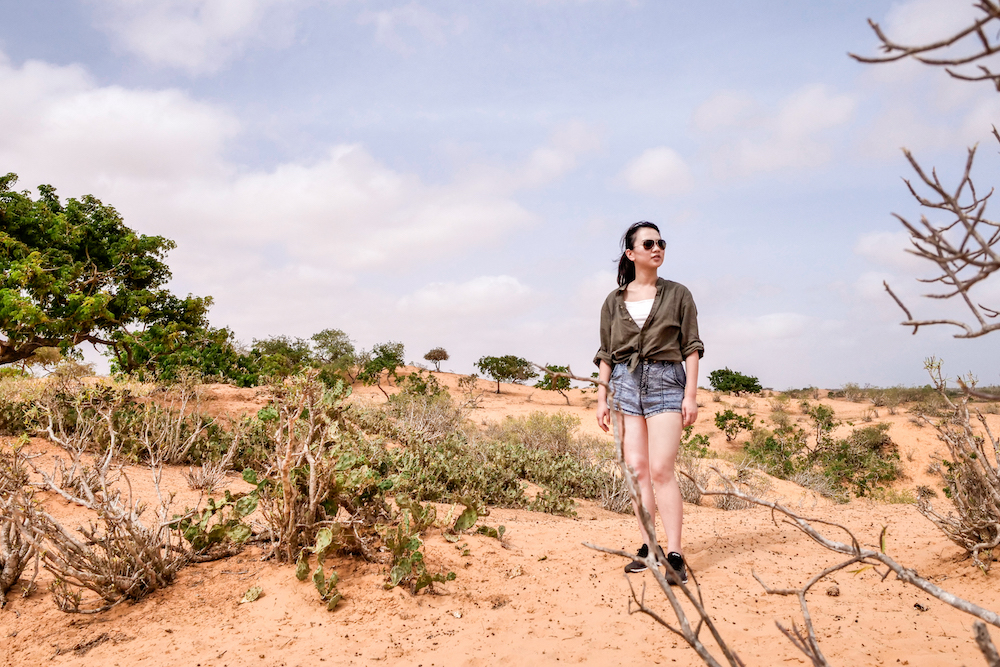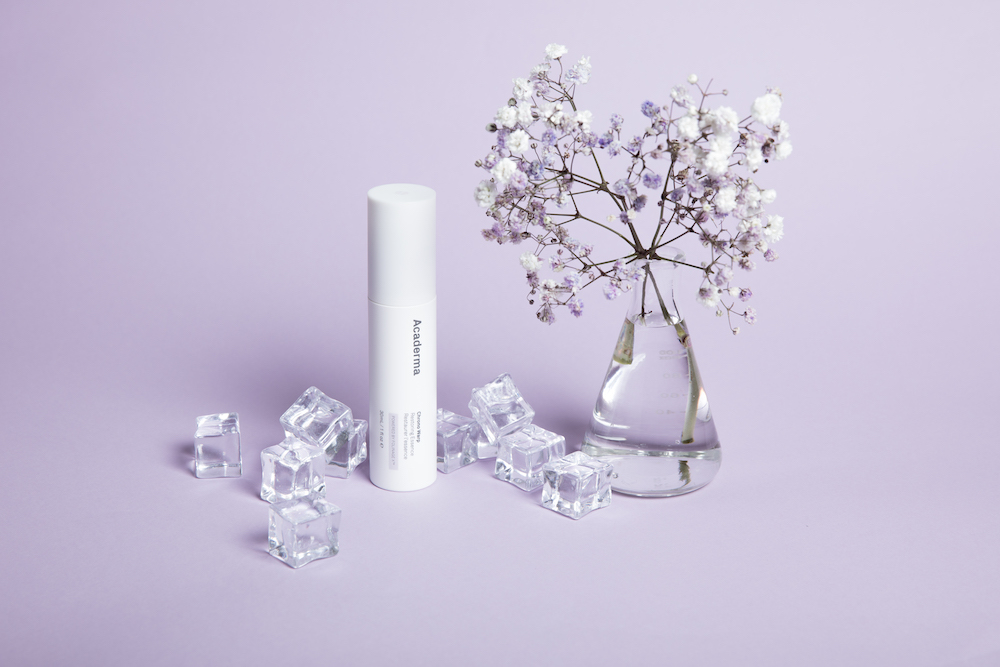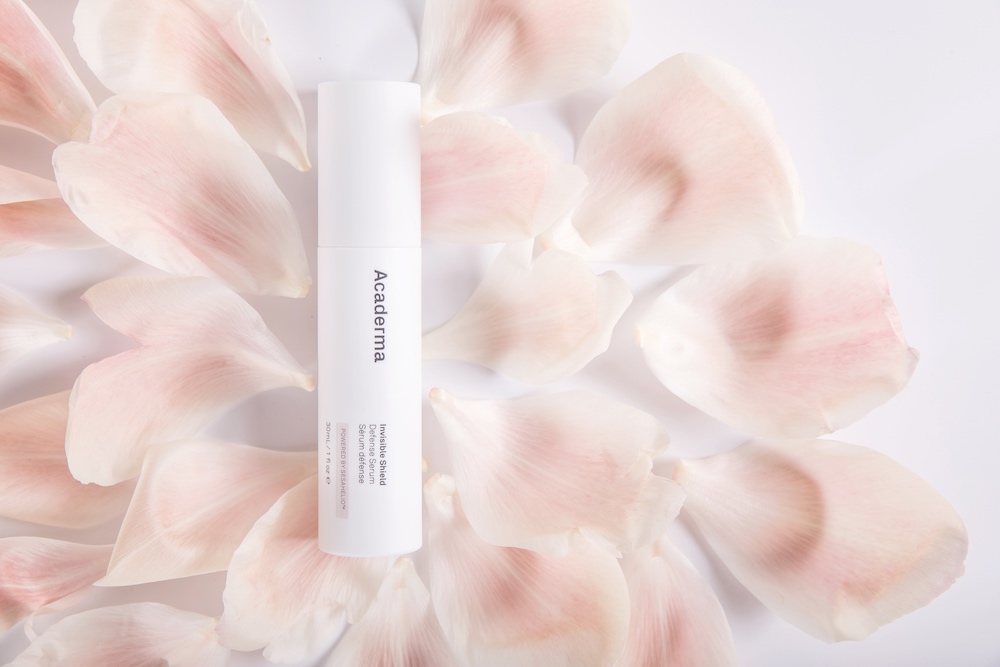
Acaderma: How Dr. Shuting Hu Searched the Globe for the Best Skincare Ingredients
May 27, 2020
Rana Good is the founder of Naïra NYC. A writer for publications such as Forbes, Travel + Leisure, Coveteur, Mens Journal and others, she created her own platform celebrating women of color.
From West Africa to East Asia to South America, Acaderma harnesses some of the best botanicals from around the globe in their skincare line. For certain ingredients they are the first and only brand to do so, take, for example, kinkileba, a popular tea in Senegal. While the ingredient has been in use there for millennia, Acaderma is the first to do so in skincare form.
One of the reasons why Acaderma is so cutting-edge with its ingredients is because the brand is helmed by Dr. Shuting Hu (pictured above), an award-winning cosmetic scientist who holds a Ph.D. in biological science (which she earned at age 23(!)) with a specialization in phytochemistry and skin biology.
I spoke to Dr. Hu about traveling the world to find new botanicals, which Acaderma products are best suited to women of color and what it’s like to run every aspect of a global skincare brand.

You have a scientific background; how did you get into skincare?
Dr. Shuting Hu: My Ph.D. is in biological science. For my research topic, I chose natural ingredients and skin biology. My research was about skincare, active ingredients, and their mechanism in skin cells. I had the opportunity to use the technologies I discovered to develop better skincare products. So that’s how I got into skincare!
What differentiates Acaderma from other skincare brands?
The most important part is that we have unique and exclusive ingredients that I discovered in my research. We don’t rely on ingredient suppliers or private label factories; we do the research and development ourselves. We know exactly what an ingredient is and why it’s good for the skin. For a plant extract, we know all of the components inside not just the functions it has. We keep everything transparent for our customers. We won’t just help you solve your skin problems, we’ll teach skin knowledge for the future. Most of our team and founders are from academia —professors, plant biologists, dermatologists, and chemical engineers.
Can you tell me about how you sourced your ingredients and where you traveled to find them?
The most exciting story is our discovery in Senegal, West Africa. Out CTO, professor James Simon, discovered a series of plants that had health benefits there called kinkileba. Then during my Ph.D. studies, I continued the research. People in Senegal use it to make herbal teas and have been drinking this tea for over 2,000 years. However, people didn’t really know why it’s good for their skin. During my research I found out that it’s anti-inflammatory, can prevent redness and soothes skin. When I visited Senegal two years ago, we collaborated with a local NGO to source the plants for our research. I was thinking what more can I do to help the local community and economy? Developing a product with traditional plants is a great way to give back to locals and provide education opportunities. Once we discover the potential materials/ingredients we wanted to create a new industry, supply chain, make a material and sustainable platform, and give back to the community at the same time.
Which of your products are particularly suited to women of color?
I think all of our products are good for women of color, however here are two products that could be uniquely helpful for deeper skin tones. We have a Star Light corrector to help with dark spots and Invisible Shield which is a potent antioxidant serum. All women, but especially those with darker skin tones, are at higher risk for free radical damage. Our serum can help discourage free radicals which are created through environmental factors such as sunlight and pollution. Darker skin tones are more easily damaged by visible light as it generates more free radicals, and the Invisible Shield protects women of color from this.
What are some of your biggest milestones with your brand?
Launching our products was the biggest milestone. We have many exclusive ingredients and to turn those from a lab product into a final product took a long time. In the beginning, we only produced one serum in the lab and scaled up and improved our technology. It takes a long time to do everything — from research, sourcing raw materials, technology, testing, and clinical trials. It took us two years to do the research and development of our serums.

How has COVID-19 affected your business?
Our production plan is delayed by five to six months, our serum Chrono Warp is sold out but we’ll have to wait three or four months to make it available again.
What advice would you give someone interested in launching their own brand?
I would say you should be prepared to learn everything. You’re the boss and need to manage the supply chain, marketing, accounting, finance, and legal. In the beginning, I even did all of the photo production for Acaderma! I did all of our photos and videos by myself, as well as the post-production. I loved photography before so I had a foundation but never did product shoots — so now when I retire I can open a photo studio [laughs].
Most people focus on one thing at work, as I did initially as a researcher, but once you launch a company you’ll have to deal with every aspect of your business. It’s challenging but I really enjoy it and learned a lot.